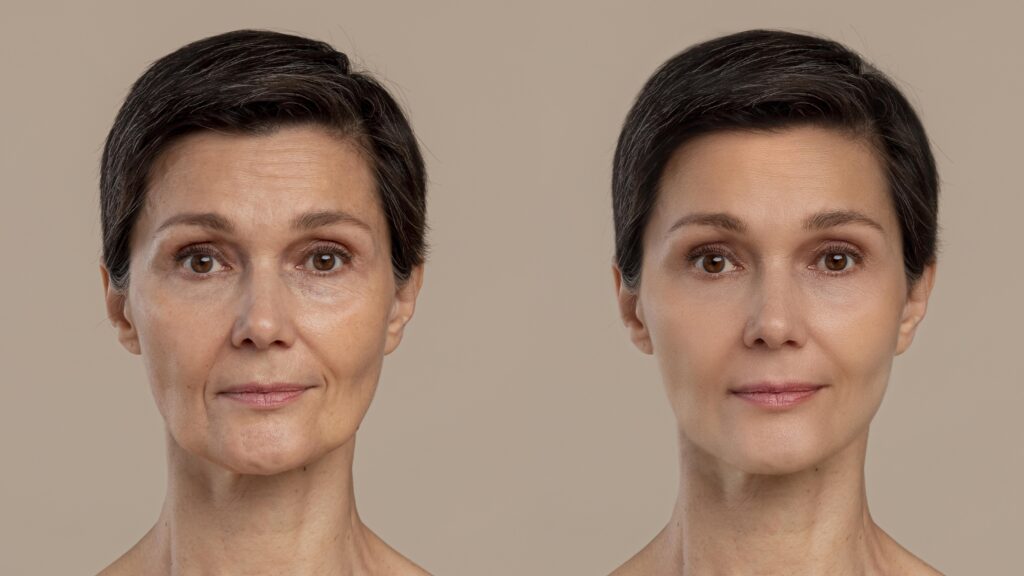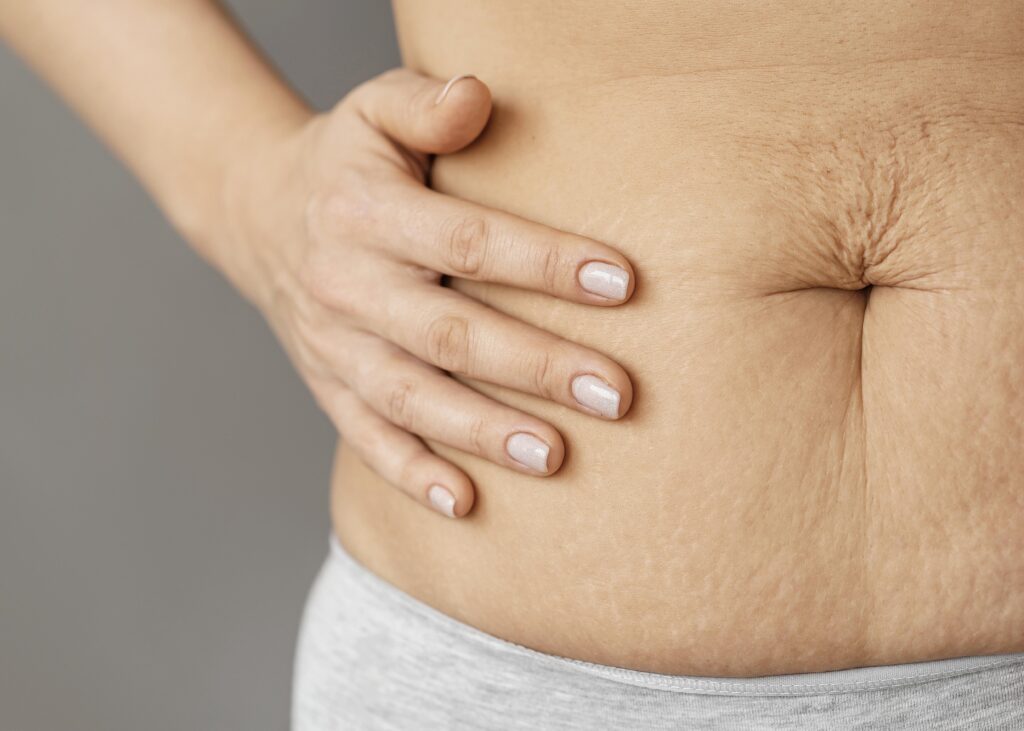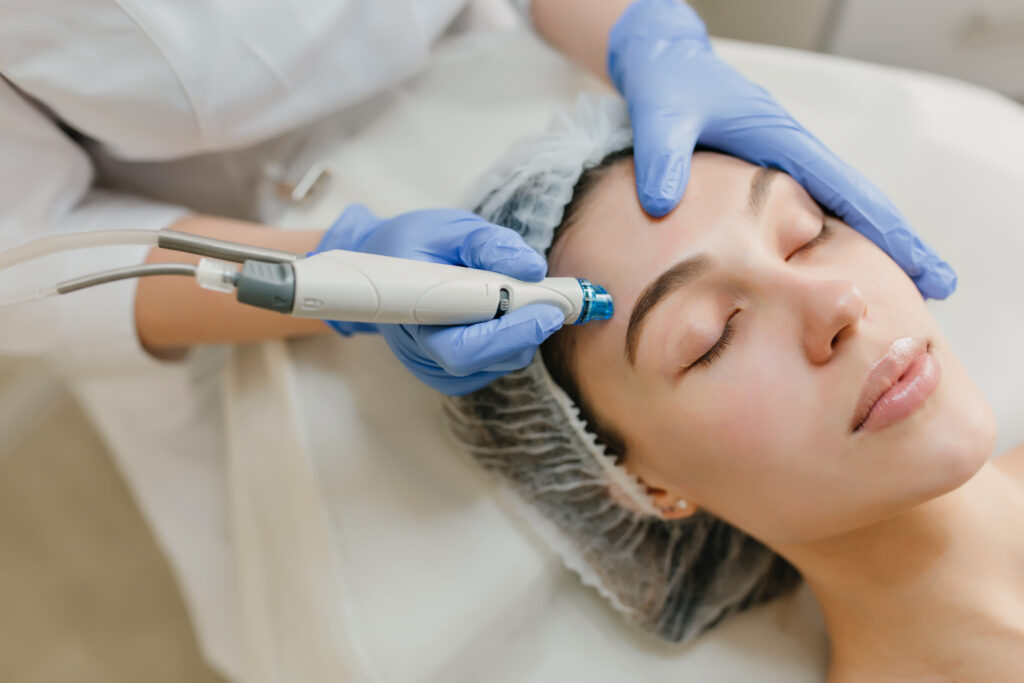
Have you ever noticed those long, thin lines on your skin that look a little different? Those are stretch marks, and they’re a super common concern for many people. They can appear on your tummy, thighs, hips, breasts, anywhere really! While they’re completely harmless, some folks just don’t love the way they look.
Microdermabrasion is a treatment that’s often mentioned for stretch marks. But does it really work? Let’s dive deep and explore everything you need to know about microdermabrasion and its effects on stretch marks.
What are Stretch Marks?
Stretch marks are those indented streaks or lines that appear on your skin. They happen when your skin stretches or shrinks rapidly. This can be due to pregnancy, weight gain or loss, puberty growth spurts, or even bodybuilding.
The good news? Stretch marks are totally normal and don’t pose any health risks. But if they’re bothering you, there are a few things you can try to improve their appearance.
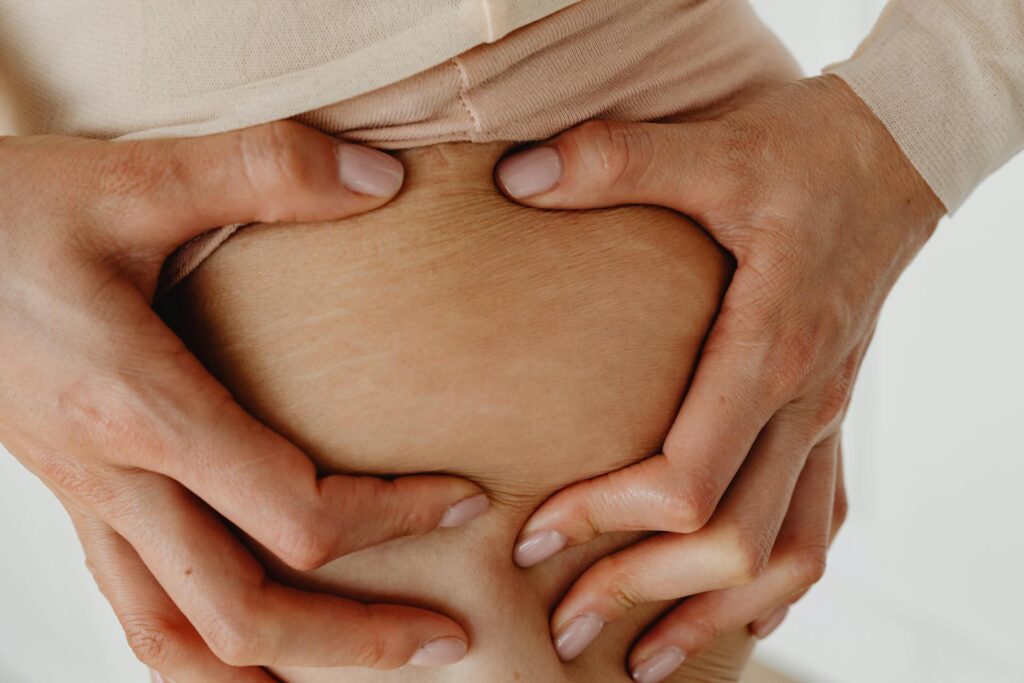
What is Microdermabrasion?
Microdermabrasion is a non-surgical treatment that removes the top layer of your skin. It’s kind of like a gentle exfoliation that buffs away dead skin cells and stimulates the production of collagen, a protein that gives your skin its plumpness and elasticity.
There are two main types of microdermabrasion:
- Crystal microdermabrasion: This uses tiny crystals to gently sand off the top layer of skin.
- Diamond microdermabrasion: This uses a diamond-tipped wand to exfoliate the skin.
Microdermabrasion is a popular treatment for a variety of skin concerns, including:
- Fine lines and wrinkles
- Uneven skin tone
- Sun damage
- Acne scars
Does Microdermabrasion Work for Stretch Marks?
Here’s the thing: microdermabrasion might help improve the appearance of stretch marks slightly. It can’t completely erase them, but it may make them look a little less noticeable.
Why? Because stretch marks form deeper in the skin’s layers, and microdermabrasion only reaches the top layer. However, by stimulating collagen production, microdermabrasion might help improve the overall texture and tone of the skin around the stretch marks, making them blend in a bit better.
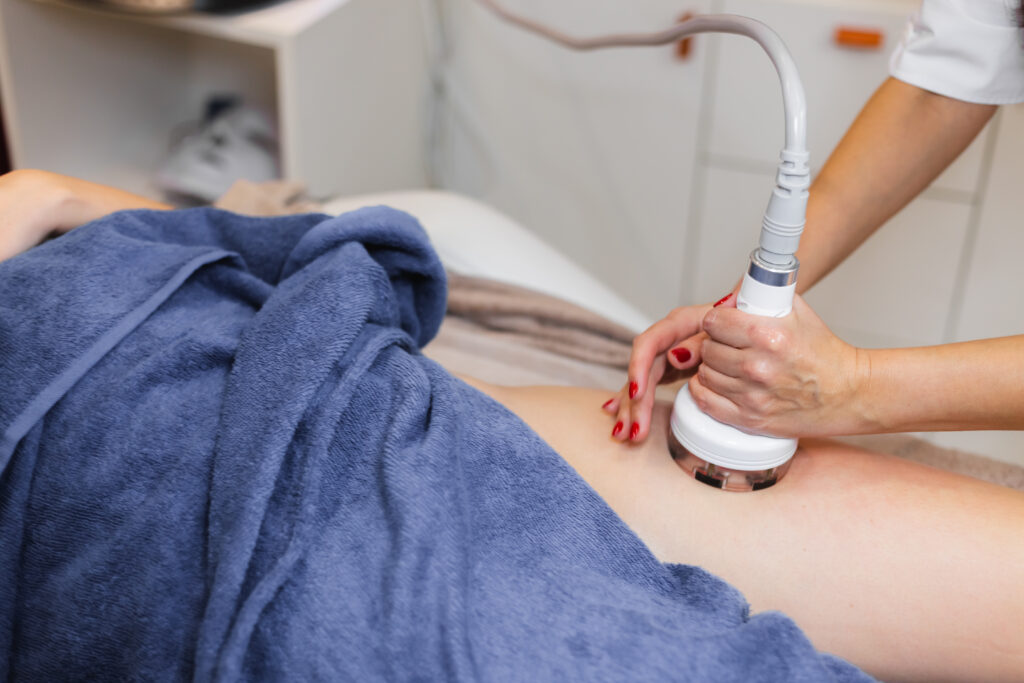
Here’s what you can expect with microdermabrasion for stretch marks:
- Results may be subtle: Don’t expect miracles! You might see a slight improvement in the appearance of your stretch marks, but they won’t disappear completely.
- Multiple treatments needed: Microdermabrasion typically requires several sessions (maybe 4-6) spaced a few weeks apart to see any noticeable results.
- Best for newer stretch marks: Fresh, red stretch marks might respond better to microdermabrasion than older, white stretch marks.
- Combine with other treatments: Microdermabrasion can be more effective when combined with other stretch mark treatments like topical creams or laser therapy (more on these later!).
Also Read: How Does Collagen Help With Stretch Marks? 3 Ways To Boost Collagen
Things to Consider Before Getting Microdermabrasion
Microdermabrasion is generally safe for most people, but there are a few things to keep in mind:
- Talk to your doctor: If you have any concerns about your skin or any underlying medical conditions, it’s always best to chat with your doctor before getting any treatment.
- Not for everyone: Microdermabrasion isn’t suitable for everyone. People with certain skin conditions like eczema or rosacea might not be good candidates.
- Temporary side effects: You might experience some temporary side effects after microdermabrasion, like mild redness, swelling, or irritation. These usually go away within a few days.
- Sun protection is key: After microdermabrasion, your skin will be more sensitive to the sun. Make sure to wear sunscreen with SPF 30 or higher every day, even on cloudy days.
Alternatives to Microdermabrasion for Stretch Marks
While microdermabrasion might offer some benefits, there are other options to consider for reducing the appearance of stretch marks:
- Topical creams: There are many creams and lotions available over the counter that claim to help reduce stretch marks. Look for products with ingredients like hyaluronic acid, vitamin C, and centella asiatica. While the effectiveness can vary, these creams might help improve the skin’s hydration and elasticity.
- Laser therapy: This treatment uses targeted laser light to stimulate collagen production in the skin. There are different types of laser therapy available, and a dermatologist can advise on the best option for your specific needs. Laser therapy can be more effective than microdermabrasion for stretch marks, but it’s also more expensive.
- Microneedling: This is a minimally invasive treatment that involves using a roller with tiny needles to create controlled punctures in the skin. This triggers the body’s natural healing response, which includes increased collagen production. Similar to laser therapy, microneedling can be more effective for stretch marks than microdermabrasion, but it also requires more downtime and might be a bit more uncomfortable.
Lifestyle Habits for Stretch Mark Reduction
Besides treatments, there are certain lifestyle habits that can help improve the overall health and appearance of your skin, which might indirectly benefit stretch marks:
- Maintain a healthy weight: Rapid weight fluctuations can contribute to stretch marks. Aim for gradual, healthy weight loss or gain if needed.
- Stay hydrated: Drinking plenty of water helps keep your skin plump and elastic.
- Eat a balanced diet: A diet rich in fruits, vegetables, and whole grains provides your body with the nutrients it needs for healthy skin.
- Moisturize regularly: Keeping your skin well-hydrated can help improve its overall texture and appearance. Look for a fragrance-free moisturizer suitable for your skin type.
- Manage stress: Chronic stress can affect your skin health. Find healthy ways to manage stress, like yoga, meditation, or spending time in nature.
Additional Tips
You can follow these tips to reduce your a
- Be patient: It takes time to see results with any stretch mark treatment. Don’t get discouraged if you don’t see a difference overnight.
- Realistic expectations: Remember, stretch marks won’t completely disappear. The goal is to improve their appearance and make them less noticeable.
- Find a board-certified dermatologist: If you’re considering any treatment for stretch marks, especially laser therapy or microneedling, make sure to see a board-certified dermatologist with experience in treating these concerns.
- Love your skin!: Stretch marks don’t define your beauty. Embrace your unique body and focus on feeling healthy and confident in your own skin.
Final Thoughts
Stretch marks are a normal part of life for many people. While there’s no magic eraser to completely remove them, there are ways to improve their appearance. Talk to your doctor or dermatologist to discuss the best approach for your specific needs and concerns. They can help you create a personalized treatment plan that might include microdermabrasion, other treatments like laser therapy or microneedling, or a combination of these along with healthy lifestyle habits.
FAQs: Microdermabrasion for Stretch Marks
Q.Is microdermabrasion effective for all types of stretch marks?
Microdermabrasion might offer some benefits for newer, red stretch marks. Since it only reaches the top layer of skin, it may not be as effective for older, white stretch marks that reside deeper within the skin’s structure. However, even for newer stretch marks, the results tend to be subtle.
Q.How many microdermabrasion sessions will I need for stretch marks?
The number of sessions needed depends on the severity of your stretch marks and your desired outcome. Typically, several sessions (around 4-6) spaced a few weeks apart are recommended. Consistency is key for optimal results.
Q.Is microdermabrasion painful?
Microdermabrasion is generally considered a painless procedure. You might feel a slight scratching or sanding sensation during the treatment, but it shouldn’t be uncomfortable.
Q.What are the potential side effects of microdermabrasion?
Microdermabrasion is a very safe treatment, but some temporary side effects are possible. These might include:
- Mild redness and swelling
- Temporary itchiness
- Slight sensitivity to the sun
These side effects usually subside within a few days.
Q.Who shouldn’t get microdermabrasion?
Microdermabrasion might not be suitable for everyone. People with certain skin conditions like eczema, rosacea, or active acne shouldn’t undergo this treatment. Additionally, if you have any open wounds, sunburn, or have undergone recent facial surgery, it’s best to wait for your skin to heal completely before getting microdermabrasion.
Q.Can I do microdermabrasion at home for stretch marks?
At-home microdermabrasion kits are available, but they typically use gentler methods compared to professional treatments. While they might help with overall skin texture, they likely won’t have a significant impact on stretch marks. Additionally, improper use of at-home kits can irritate your skin. It’s always best to consult a dermatologist for professional microdermabrasion for stretch marks.
Q.What are some alternative treatments for stretch marks besides microdermabrasion?
Several options can be more effective for stretch marks than microdermabrasion. These include:
- Topical creams: Creams with ingredients like hyaluronic acid, vitamin C, and centella asiatica might improve skin hydration and elasticity, indirectly helping with stretch marks.
- Laser therapy: This uses targeted laser light to stimulate collagen production, potentially reducing the appearance of stretch marks more effectively than microdermabrasion.
- Microneedling: This minimally invasive treatment creates controlled punctures in the skin, triggering collagen production and potentially improving stretch mark visibility.
Q.What lifestyle habits can help with stretch marks?
While not a direct treatment, maintaining healthy habits can contribute to overall skin health, which might indirectly benefit stretch marks. Here are some tips:
- Maintain a healthy weight to avoid rapid weight fluctuations.
- Stay hydrated by drinking plenty of water.
- Eat a balanced diet rich in fruits, vegetables, and whole grains.
- Moisturize your skin regularly with a fragrance-free moisturizer.
- Manage stress through yoga, meditation, or spending time in nature.
Q.How much does microdermabrasion for stretch marks cost?
The cost of microdermabrasion can vary depending on your location, the experience of the provider, and the number of sessions needed. Generally, it’s a more affordable option compared to other stretch mark treatments like laser therapy or microneedling.
Q.Will microdermabrasion permanently remove my stretch marks?
Unfortunately, no treatment can completely erase stretch marks. However, microdermabrasion, when combined with a good skincare routine and healthy lifestyle habits, can potentially improve their appearance and make them less noticeable.
